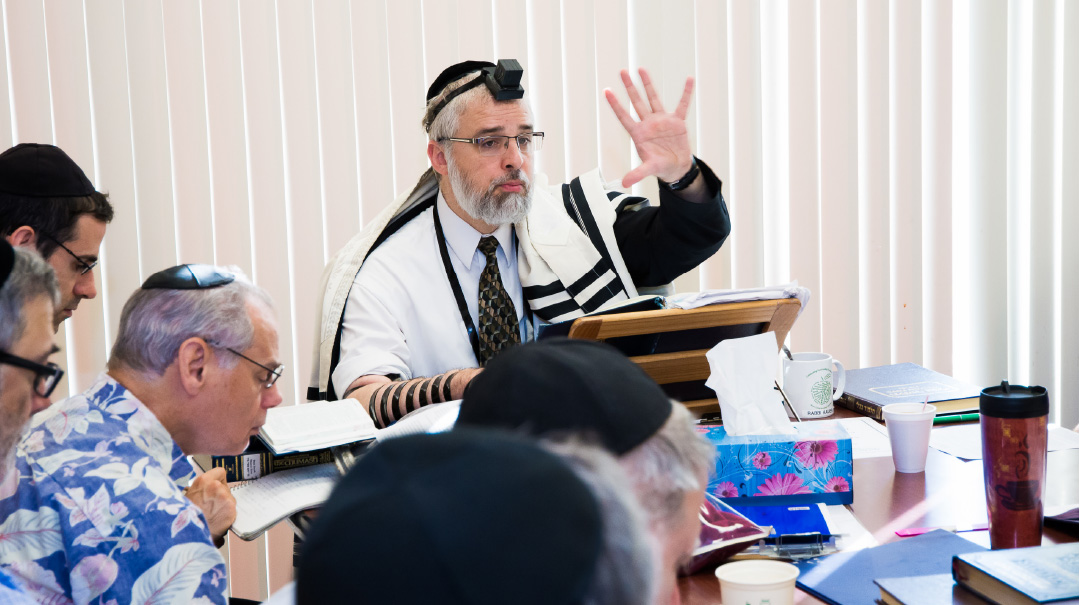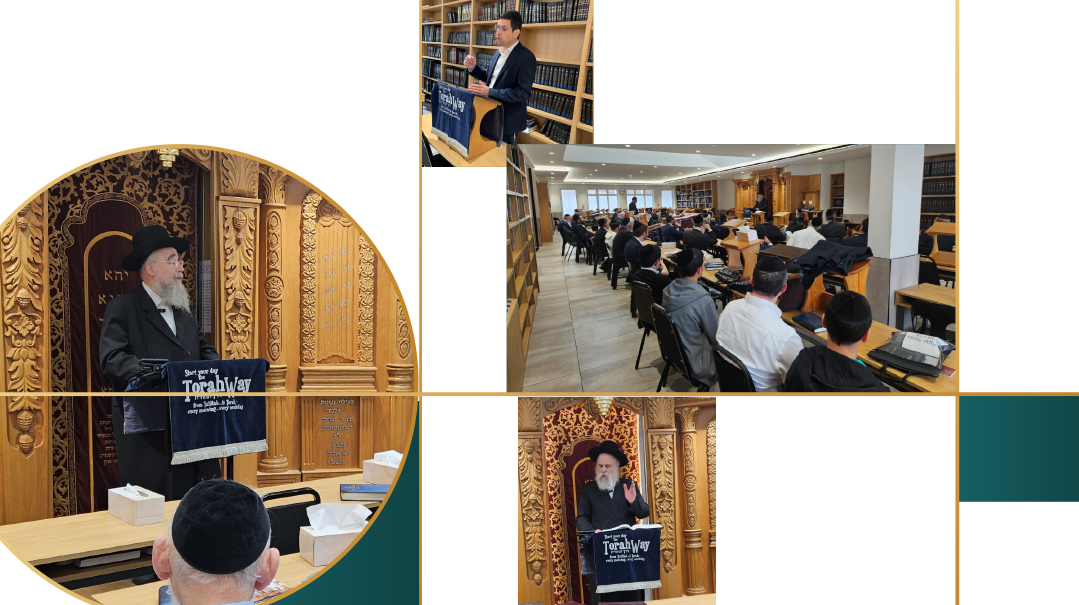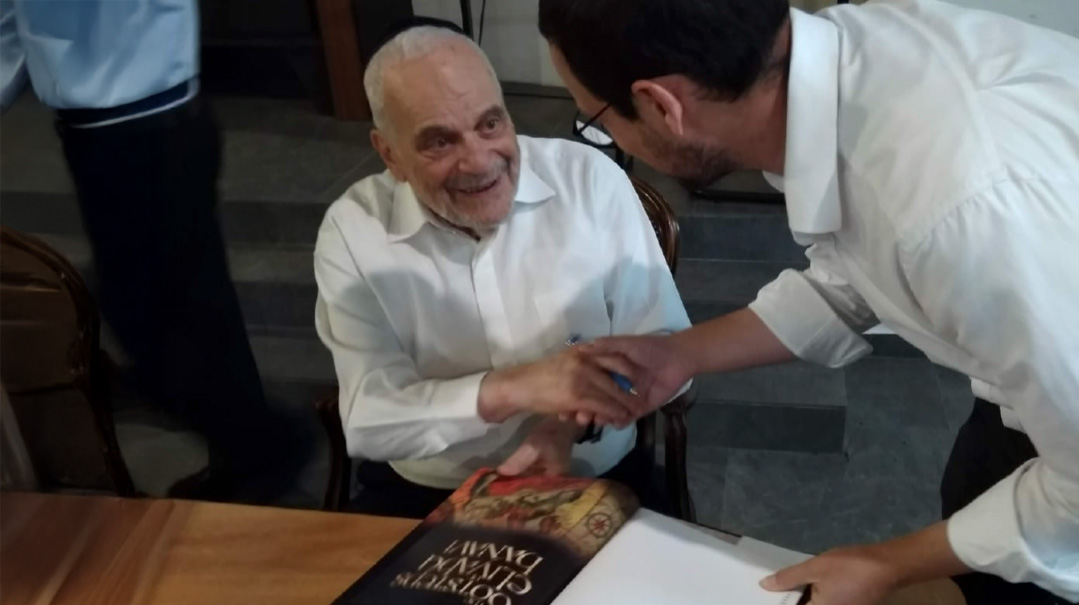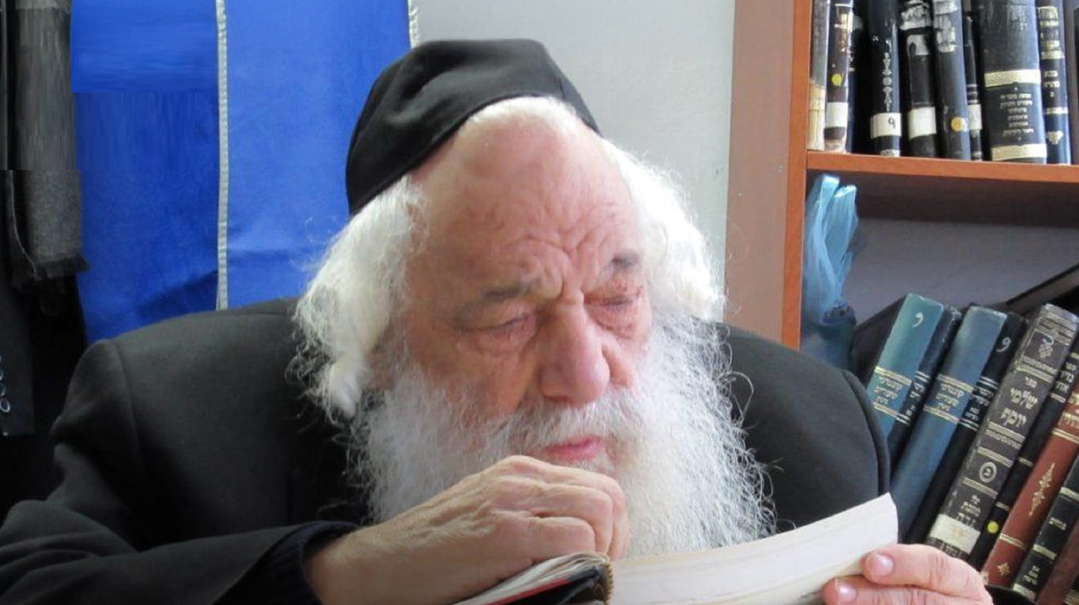Passing of a Prince
| October 24, 2023In tribute to Rav Shimon Alster
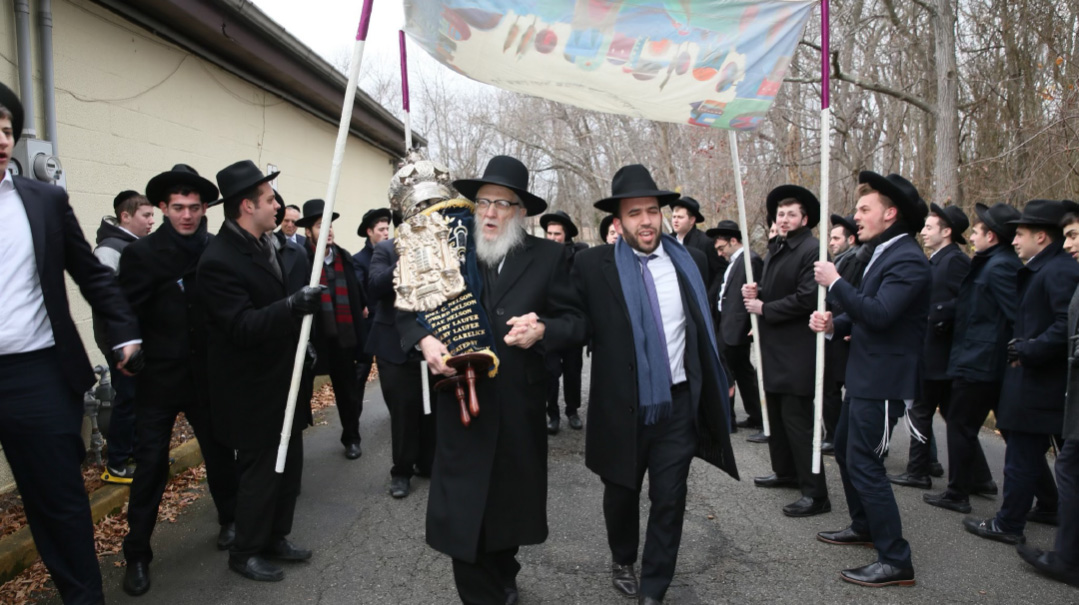
Last week, America’s yeshivah world lost one of its princes with the passing of Rav Shimon Alster ztz”l. Rav Alster, who fulfilled dual roles both as rosh yeshivah of the Yeshiva Gedolah of Cliffwood, which he founded, and rav of Beis Medrash Torah u’Tefillah in Flatbush, was the quintessential rebbi, guiding, leading and teaching hundreds of talmidim and mispallelim with a blazing clarity and boundless love.
Through heartbreaking loss, talmidim remember
“IN
2008, I was standing with my rosh yeshivah at the end of Reb Shmuel Berenbaum’s levayah, and I asked him what he would have said about the great Reb Shmuel,” remembers Rabbi Yaakov Tesser, rabbi at Young Israel of Aberdeen and executive director of Yeshiva Ohavei Torah of Riverdale.
“His answer was telling. ‘Like Reb Chaim [Epstein ztz”l], Reb Shmuel’s ahavas haTorah was something that every ben Torah should aspire to have,’ he said.
“We traveled back to yeshivah in Cliffwood after the levayah and it was completely silent the entire trip back. Nothing needed to be said. When we got back, the Rosh Yeshivah asked me to please gather the bochurim right away. Once everyone was in the beis medrash, he began to speak.
“ ‘We have a tremendous void in the world now, ” he said, “of hasmadas haTorah to the highest level. Reb Shmuel was immersed in Torah in his entire life — his mouth never stopped uttering the words of Torah.’
“It was incumbent upon us bnei Torah, he exhorted, to fill the large void left in the world, as now all that hasmadah, all that ahavas haTorah, was gone.
I can humbly say the same exact words about my rebbi, my rosh yeshivah, my mentor, Rav Shimon Alster ztz”l. The void is indescribable. The loss is unbearable.”
Born on the Upper West Side in 1946 to Reb Yosef Shmuel and Gittel Alster, both natives of Antwerp, young Shimon was orphaned as an infant when his father passed away in a tragic plane crash. While she raised him alone, his mother was determined that he develop into a talmid chacham, and in 1960, after his bar mitzvah, at the urging of his mother’s cousin, he traveled via boat to Eretz Yisrael with his mother. He learned in Yeshivas Kol Torah for several years before returning to the United States, where he became a talmid of Rav Binyomin Paler ztz”l in Yeshiva Chasan Sofer.
Upon his return, Shimon married Esther Weiss, a daughter of Rav Yosef Weiss, longtime maggid shiur in Yeshivas Rabbeinu Yitzchok Elchonon (RIETS) and rav of the well-known Morya Shul on the West Side of Manhattan. Rav Weiss was an incredible masmid, a brilliant talmid chacham, and a staunch advocate and defender of mesorah, three traits that his esteemed son-in-law would eventually gain renown for as well.
“Reb Shimon’s hasmadah was something I have never seen the likes of in my lifetime,” continues Rabbi Tesser.
“I was once standing near him at a chasunah when someone asked him, ‘How does the Rosh Yeshivah juggle both the shul and the yeshivah?’
“ ‘I don’t juggle’ the Rosh Yeshivah responded. ‘A juggler holds each item for a quick period of time, and then gets rid of it to catch the next item. Baruch Hashem, I’m zocheh to be a part of both.’ ”
Rav Alster was the rosh yeshivah of Yeshiva Gedolah of Cliffwood and simultaneously a rav dedicated to his kehillah, Beis Medrash Torah u’Tefillah. The shul started some 30 years ago, at the behest of talmidim who had settled in Flatbush and requested that their beloved rebbi — who was living in Boro Park — continue to lead them. He acquiesced, building a beautiful, Torahdig kehillah in the heart of Flatbush, and he led both the shul and yeshivah for the remainder of his life, with his steady, firm dedication to Hashem and his Torah.
A
fter his marriage, Rav Alster was invited by Rav Yitzchok Feigelstock ztz”l, the rosh yeshivah of Mesivta of Long Beach, to be the second seder shoel u’meishiv, a position he held for many decades. In this capacity, he taught his talmidim how to learn a blatt Gemara and develop a sugya. Reb Yitzy Fuchs, a longtime mispallel at Rav Alster’s, recalled that an acclaimed marbitz Torah, who was just several years junior of Rav Alster and had learned in Long Beach during the early days of his tenure, visited the shul and referenced something that “mori v’rabi Rav Shimon” said — a title indicative of the esteem even his second seder talmidim held him in.
Rav Alster left Long Beach in 2004 and opened up his own yeshivah in Cliffwood, New Jersey, where held the position of rosh yeshivah until his passing last week.
His schedule was incredibly demanding. The Rosh Yeshivah would learn with his balabatim in his shul in Flatbush at 6 a.m. and then drive to Cliffwood to learn with bochurim before the yeshivah’s Shacharis. After Shacharis, he would learn halachah with a group of bochurim, and then break for five minutes for a minimal breakfast, before first seder and shiur. By the time he had finished addressing any questions talmidim had on the shiur, bein hasedorim was well underway.
When he finished shiur, he would close his Gemara, his face reflecting both exhaustion and elation, “as if he had just run a marathon,” a talmid says. “He would look around and sigh a big sigh. ‘It’s sooo nice to learn,’ he would say. ‘It’s so nice to learn.’ ”
He would continue giving vaadim to bochurim and yungeleit through bein hasedorim, stopping only for Minchah and mussar. And second seder found him in the beis medrash as well. He would then take dozens of phone calls from talmidim of both the shul and yeshivah, helping them navigate their personal challenges in life. Reb Yitzy Fuchs, who leads a bochurim camp in Eretz Yisrael, remembers how Rav Alster would call him during the summer months to have him check up on talmidim of the yeshivah learning in Eretz Yisrael, even once instructing him to go to a bochur’s dirah to deliver a personal message from his rosh yeshivah back in Cliffwood.
The Rosh Yeshivah would come into the beis medrash during second seder and call aside a few chavrusashafts to “talk in learning” with them. This would go on until the end of second seder, and night seder was the same.
“The schedule was unbreakable,” Rabbi Tesser says. “There was nothing that got in the way. He almost found it humorous when people would invite him to speaking engagements that interfered with seder. There was nothing to discuss — the blatt Gemara took precedence over all other tasks. No matter when, and no matter what.”
Besides providing a living example of hasmadah in Torah, Rav Alster was determined to teach his talmidim how to learn. He didn’t focus on the “reid” of a sugya, but rather more on the landscape of a sugya from inside the blatt. Every talmid would tell you his famous words: After toiling over a sugya for hours together with the bochurim, he would say, “Now, let’s learn the Gemara together inside —you will see everything inside.” That’s what he wanted most — that his talmidim should know how to learn!
His shiur reflected this methodology as well — inside the Gemara, inside every rishon and then a complete hekef on the sugya. And his many talmidim, spanning his 55 years in the beis medrash, both from Long Beach and Cliffwood, ate out the palms of his hands.
“Every talmid of the Rosh Yeshivah is proud of being a ben Torah,” Rabbi Tesser continues. “This was the primary focus of all his thousands of shmuessen. He would always say a ben Torah has to better. On a higher level. Many things the Rosh Yeshivah would tell us when we were 18 years old would still be ringing in our heads 20 years later. And they would be relevant and applicable still then.
T
he Rosh Yeshivah cared about his talmidim intensely, and they knew it. “One night seder after a long day, I was standing around his shtender with a few fellow talmidim when the Rosh Yeshivah looked at his watch and gave a sigh,” Rabbi Tesser shares. “ ‘Oy, I have another chasunah tonight, my fourth of the week,’ he said.
“But then he klapped on the shtender lightly and jumped up, exclaiming, ‘But for the chassan it’s the biggest day of his life! Let’s go be mesameiach him.’ And then like a soldier, he would go to his fourth chasunah of the week, as if it were the only one.
“We all felt it. Every talmid felt like he was the closest talmid… and he was. The Rosh Yeshivah never lost cheshbon of anyone’s life, and where they were up to — even remembering talmidim’s children’s names. He made sure to always take part in his talmidim’s family milestones and simchahs. He was famous for his leibedig dancing at talmidim’s chasunahs. This was really the way he felt — ‘it’s the biggest day of the chassan’s life.’
“Over the past few months, during the Rosh Yeshivah’s illness, so many talmidim were at a loss — simply helpless. We had nowhere to turn. He provided guidance on every issue that life brought, and he was always available to help. Which made it so difficult recently when he was not available and even more difficult now, knowing that we would never have him again. He taught us everything we know, and everything we’ll need to know — how to view a tragedy, what to learn from something, how to listen to something, who to listen from, how to approach a problem, what to do in every scenario. We talmidim are so lucky.”
Another talmid also talks about the clarity and guidance he offered. “He was able to see the full picture. Every time we called with a sh’eilah, there was no confusion or hesitation — right away there would be a clear answer which encompassed everything with such calmness and yishuv hadaas,” he says.
And he was able to connect to every person, regardless of age or stature. Rav Menachem Savitz, who spent his summers in the bungalow colony with Rav Alster, says that his children cherished the time that they were able to talk to Rav Alster, and shared that when he asked his nine-year-old what the highlight of his summer was, the little boy immediately responded that it was his time with the Rosh Yeshivah.
T
he Rosh Yeshivah managed to convey distance and closeness at the same time. He always maintained his privacy, never ate in front of the bochurim, never talked about himself or his children, and he never complained.
A talmid remembers visiting the Rosh Yeshivah after he had surgery. He was in pain, but told his talmid he didn’t want to take the full dose of pain meds because they didn’t allow him to think clearly. “Everything was completely soldier-like,” Rabbi Tesser says. “We all knew this. He would always make a brachah with his hat on and was medakdek on every nuance in halachah with the utmost koved rosh.”
“He always tried to give over what it means to be a Yid,” remembers a talmid. “Yidden don’t drink from a bottle, don’t keep their hands in their pockets, don’t whistle, he taught us. He would always say that a Yid doesn’t dance by himself, referring to chasunah dancing where circles would break up and boys would jump alone.”
In the winters, he would have Melaveh Malkah with the bochurim, driving from Brooklyn to Cliffwood to join the yeshivah, and relate gedolim stories. One time he spoke about using a fork and knife to eat pizza. He concluded, “Don’t go use a fork and knife, but I want you to think about it.”
He wanted his bochurim to think, to be self-aware. “He was so real but never spoke about being real,” a talmid says. “You learned from him how important it is to know and understand yourself.”
His dignity never precluded him from doing what he thought needed to be done. In a hesped, his son shared that there was a woman in his kehillah who had a hard time getting her kids to bed. More than once, he went over to her home to help out with bedtime.
“He had the ability to show the most love and care to everyone who beseeched his guidance,” Rabbi Tesser says. “He was the address to settle disputes and issues and was steadfast in his support to the less fortunate.
“We can’t imagine a world without the Rosh Yeshivah. But we know what he would want — ‘Let’s learn the Gemara.’ ”
Yehi zichro baruch.
(Originally featured in Mishpacha, Issue 983)
Oops! We could not locate your form.

